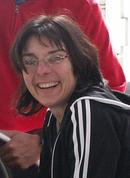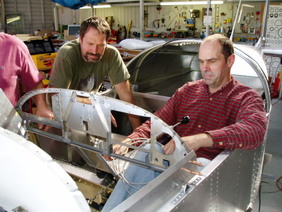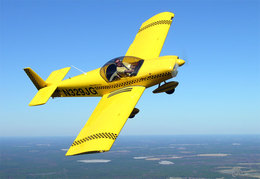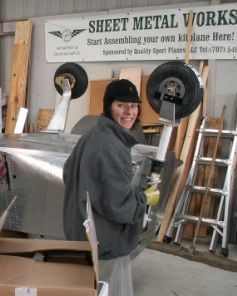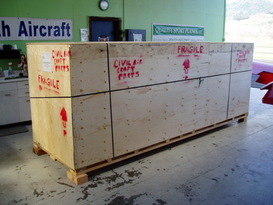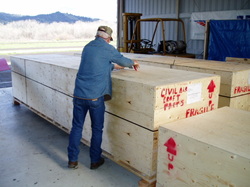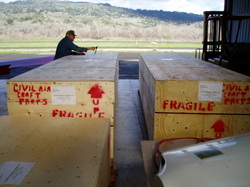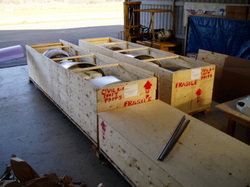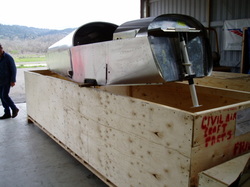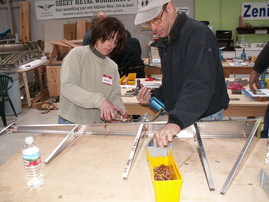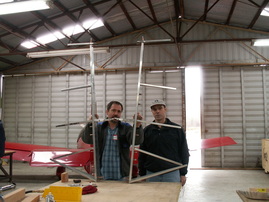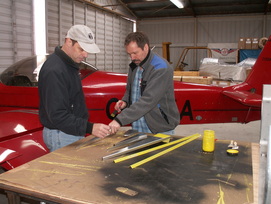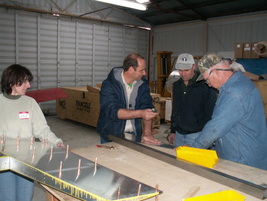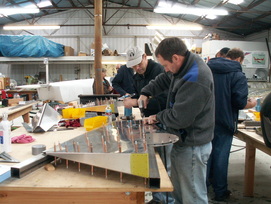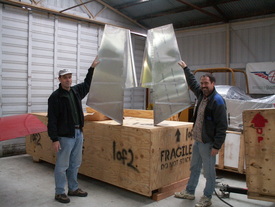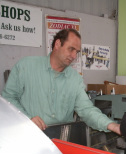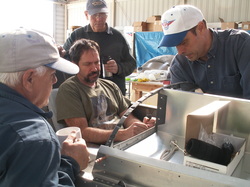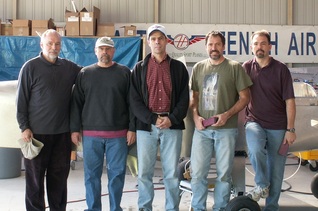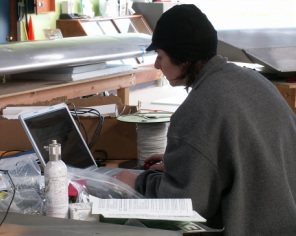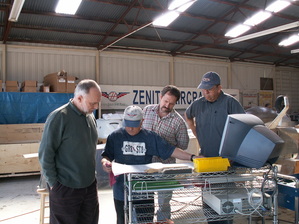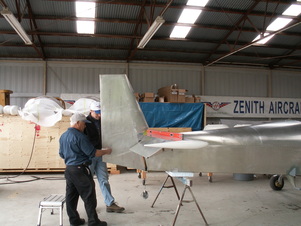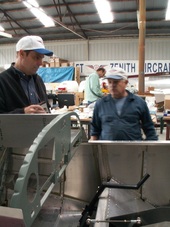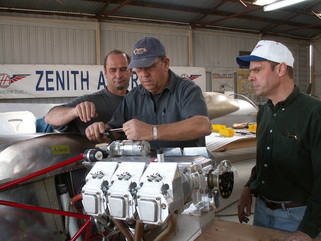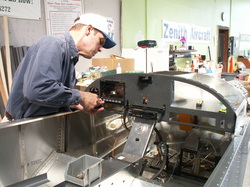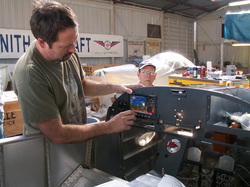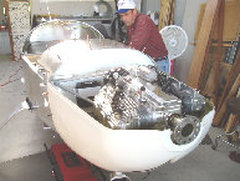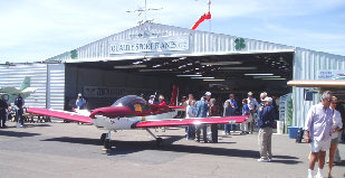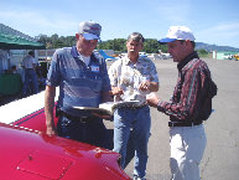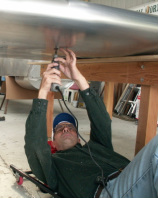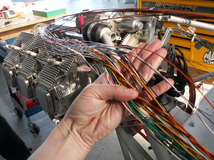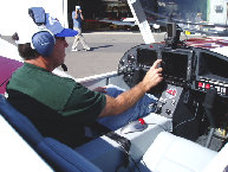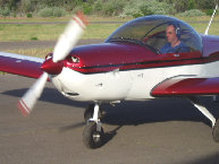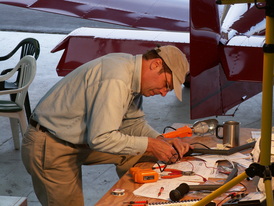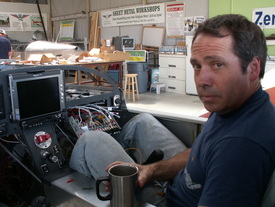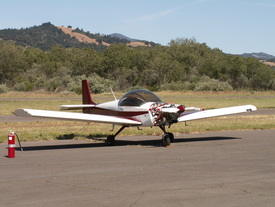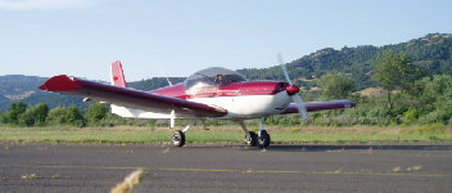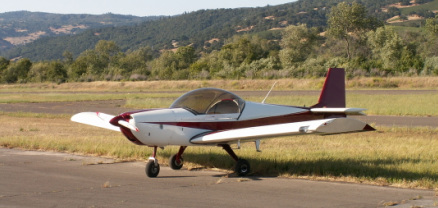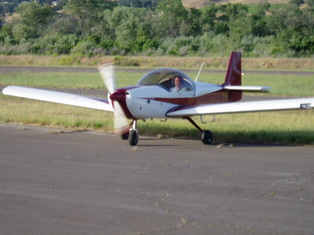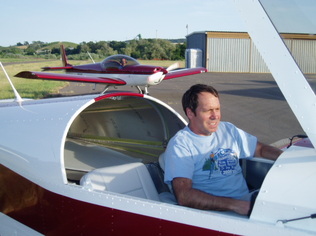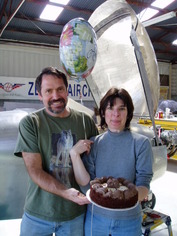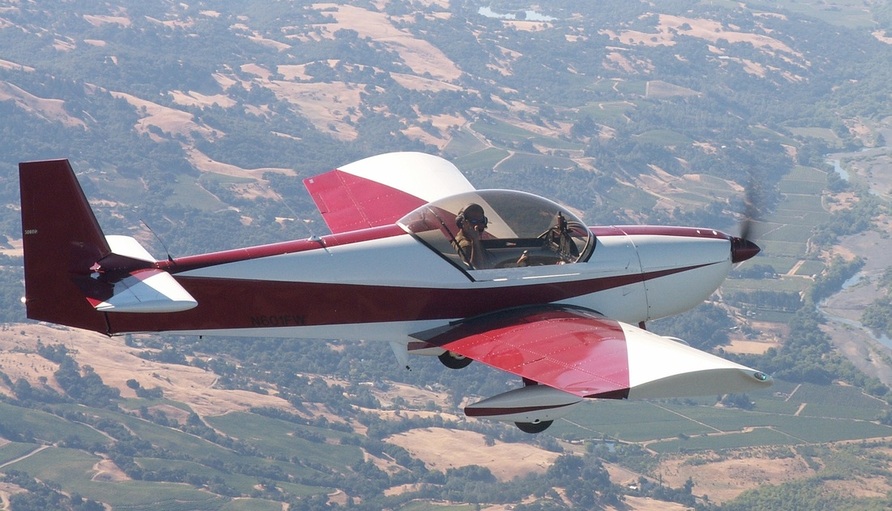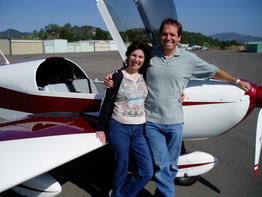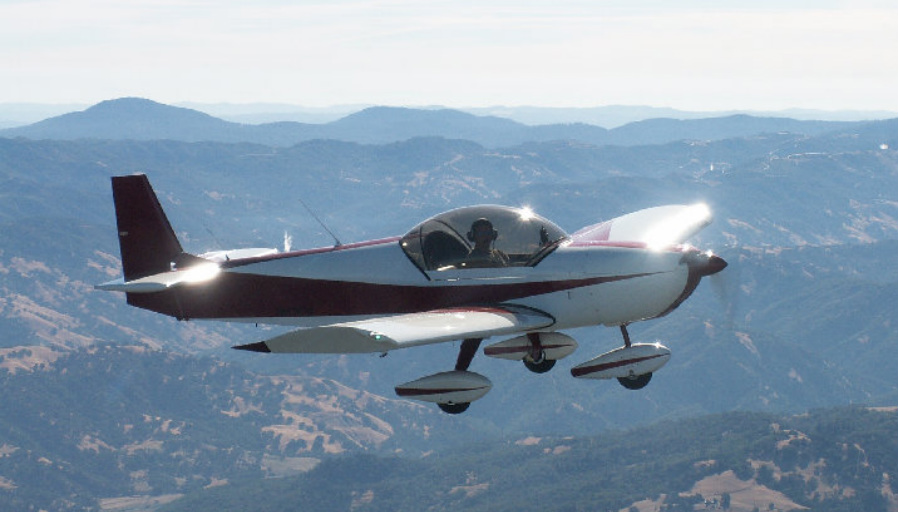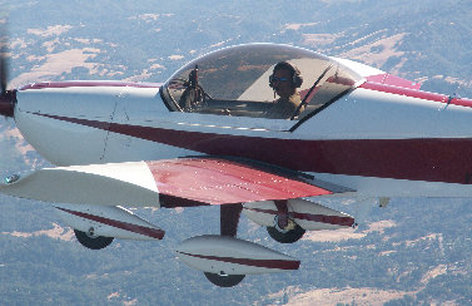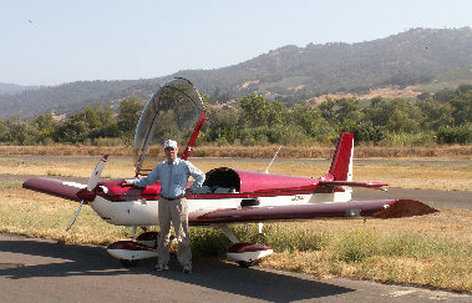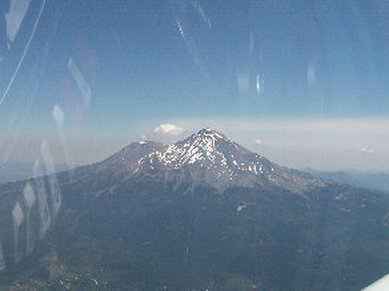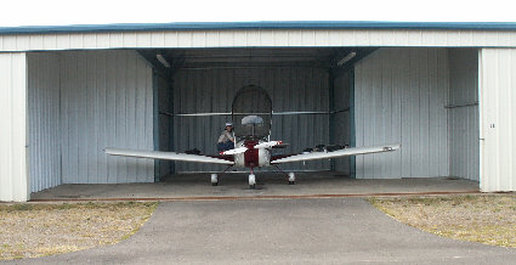_In the winter of 2006, Steve Smith and his brother Alan decided it was time for
them to do something different. As far back as they could remember,
their family had always had some kind of connection with flying, so,
they decided that whatever they did, it should be aviation related. They
decided to build an airplane.
Neither Steve nor Alan wished to launch into a project that would take forever to finish. As they searched for a suitable aircraft, near the top of their list was: proven design, availability of an advanced kit and demonstrated ease of assembly. They also started to look for a building site that would accommodate their project, preferably one that offered "builder-assistance".
After weeks of research, they had found what they were looking for. During those weeks however, the project had also evolved: they had now decided to build TWO airplanes together, one for each of them! But perhaps even more important, they had found a secret weapon that would ultimately insure the success of the whole venture: Alan's ever-supportive wife, Nathalie.
The following story is a summary of the whole experience, as told by Nathalie. She was there every step of the way, making sure the hundreds of parts and pieces and tools were identified, ordered, and on-hand for Alan, Steve and their helpers. As the airframes and engines and instrument panels came together, Nathalie also made sure the wood stove didn't go out, that check-lists and schedules were adhered to, and that snacks and lunches were ready when needed. She even got to know the staff at the local Ace Hardware store very, very well... This is their story, as told by Nathalie:
Neither Steve nor Alan wished to launch into a project that would take forever to finish. As they searched for a suitable aircraft, near the top of their list was: proven design, availability of an advanced kit and demonstrated ease of assembly. They also started to look for a building site that would accommodate their project, preferably one that offered "builder-assistance".
After weeks of research, they had found what they were looking for. During those weeks however, the project had also evolved: they had now decided to build TWO airplanes together, one for each of them! But perhaps even more important, they had found a secret weapon that would ultimately insure the success of the whole venture: Alan's ever-supportive wife, Nathalie.
The following story is a summary of the whole experience, as told by Nathalie. She was there every step of the way, making sure the hundreds of parts and pieces and tools were identified, ordered, and on-hand for Alan, Steve and their helpers. As the airframes and engines and instrument panels came together, Nathalie also made sure the wood stove didn't go out, that check-lists and schedules were adhered to, and that snacks and lunches were ready when needed. She even got to know the staff at the local Ace Hardware store very, very well... This is their story, as told by Nathalie:
|
_"You're building a what???!!!"
_I heard that quite a bit in the last few months. I think I still have
some incredulous co-workers and family members to this day. We didn’t
really want to build an airplane; maybe that’s one of the reasons why it
only took us four months to do it.
Hi, I’m Nathalie, and this is the story of how I, my husband Alan, and his brother Stephen built 2 Zodiac 601 XL airplanes from (almost) scratch with plenty of help from the Quality Sport Plane crew in Cloverdale, CA. |
|
_Buy vs. Build
_In the Summer of 2006, Alan and Stephen started looking into flying and
airplane ownership as a life-focus exercise to offset too many hours
spent at work. We spent lots of time researching possible airplanes and
reading through the “for sale” listings. Our initial criteria called
for an airplane that would take two people on a reasonable cross-country
trip with an acceptable degree of comfort and a healthy dose of fun.
The more we learned, the more we were able to refine our parameters.
Although Alan and I both have our private pilot license, albeit with few
hours, expedience dictated a Light Sports Airplane (LSA) as a starting
point for Stephen.
|
_A common predilection towards technology and gadgets eliminated older
craft. Our price constraints narrowed the field even more. Our
requirements and objectives increased as we learned about all of the
options and alternatives. In the end, we just couldn’t find a COT
(“commercial off the shelf”) aircraft that delivered what we were
looking for.
|
_What to Build...
_Selection of our aircraft involved even more internet research and a few
field trips. We were after an LSA craft with good chance of actually
reaching the LSA speed limit. We were also looking for a low stall
speed, good visibility, and two places side by side configuration. We
also wanted something that was proven, backed by a successful company
which we could expect to be around for a while, with successful craft in
the air. After an extensive process of elimination, a bit of
compromise and a few deviations into the realm of fringe concepts, we
settled on Zenair’s Zodiac 601XL with a Jabiru 3300 engine.
|
|
_ How/when/where to build or the “buy vs. build” compromise
_ One of the things that we observed during our
research was that there are three broad categories of people in the
experimental / light sport community: Builders, Flyers, and Builder Flyers. Some people just like to tinker. Some people
are seriously “tinker challenged”, but they like to fly. Some people actually do both. The number of ads that we ran across reading
something like: “For sale 75% complete…” was a big red flag for us. Most kit sellers maximize the performance
figures of their product and minimize the effort involved in actually enjoying
that performance. We were very sensitive
about falling into a never ending project.
So, we cheated! We looked at
every component of the kit and cherry picked the areas where we felt that we
could add value. We also looked for
components that we felt could be better handled by someone with more
experience. We think that the result of
this approach lead us to a unique solution.
|
|
_We started out with the “Ultra quick build” option offered by Michael
Heintz’s shop, Quality Sport Planes, in Cloverdale CA. This kit option
included mostly built wings, fuselage, and canopy. Those items were
shipped right off of the certified assembly line. This allowed us to
focus our efforts on the instrument panel, electronics, engine and
general layout of the cabin as well as picking out paint colors and
design for the planes. Funny how long that actually took!
We also decided to go through the “Builder assist” program that Michael offers. This program provided experienced hands-on help throughout the process in the persons of Eric Petersen, Doug Dugger, Ed Dalbec, and of course, Michael who often added invaluable input in time of puzzlement. |
_Rudder workshop (Sanity check of “How/when/where to build”)
_But before we fully committed to the project, we wanted to do a last
sanity check. My husband and his brother had quite a bit of mechanical
aptitude and experience but that experience had been mostly limited to
cars, bicycles, boats, and motorcycles. I had basically no experience
and never felt much aptitude either! None of us had ever pulled a rivet,
twisted safety wire, or even seen a cleco. In order to get an idea of
what we would be up against we enrolled in a two day rudder build class
the last weekend of February 2007.
_The class gave us an opportunity to get hands-on experience with some of
the tools, start learning the vocabulary (cleco, rivet, etc…), and to
get a glimpse into the world of aircraft construction. It also gave us
an opportunity to meet Michael, evaluate his shop, and the whole builder
assist process, and get a much better sense of whether or not
undertaking this project was actually a good idea: could we reasonably
expect to build 2 planes in a reasonable time period (less than 6
months)? This was particularly important to Alan and me as we live in
Washington State and only had limited vacation time to be on-site. What
we could not complete during our vacation would have to be done over
long weekend trips. We needed to make sure that we could do it.
_Oh, yes, we also built our rudder during the rudder build!
_“10 Day Build” with “Builder Assist”
_Our vacation started on March 2nd and on Saturday March 3rd, we parked
Stephen’s Winnebago next to the Quality Sport Planes hangar and moved in
for 2 weeks of long working hours (12 on average) and no weekend breaks
as we wanted to make the most of our “vacation”. Our arrangement
included the use of a fully stocked workshop, the assistance of three
experienced aircraft builders (Ed, Eric, and Doug) and a direct line to
Zenair support through Michael Heintz.
|
_ It turned out to be a highly collaborative experience. For much of the time we had a fairly large crew working on the two airplanes. Alan and Stephen were joined by their three other brothers for a few days, making the event something of a family reunion.
Each brother was put to specific tasks based on experience, ability and needed tasks. We also had our three experienced builders on hand who were an invaluable resource to us. Everyone found a productive fit in the team. We never ran short of work! |
|
_Having had little opportunity to develop mechanical/electrical skills, my spot ended being:
|
_We were constantly puzzling over some innovation on one plane then
completing it on the other plane in ¼ of the time. All the while
Michael and his crew were keeping a close eye on our progress and
offering insightful assistance. The only times that we were left
on our own were when we puzzled over our electronic equipment on our
instrument panels: serial port replicators, USB hubs, tablet computer
interfaces, etc....
_With all the help and average 12 hours day, things moved right along.
The first set of wings was ready to go to the painter within a couple of
days and was back by the end of the first week. Ed had found a local
body shop which had the equipment to paint the planes and Eric gave us
the use of his truck and trailer to move the wings one by one to the
body shop. Stephen’s wings were next and by the time Alan and I had to
leave back for Washington State, both sets of wings had been painted and
Stephen’s fuselage and cowling was ready for his paint. By then, it was
mostly dependent of the body shop’s schedule and not so much on our
degree of completion of the planes.
|
_We made excellent progress during these 2 weeks, wings were finished,
engines were installed, fuselage, empennage, rudders, elevators, cowling
all were pretty much complete. Various antennas and sensors had been
installed and connected, etc… Having never done this kind of thing
before, we really didn’t know what to expect, or how to judge our
progress, but we have come to understand that our accomplishments were
quite unusual. And during the whole process, we never experienced
obstacles due to a lack of tools, materials, or expert knowledge.
|
_The follow-up long weekends
_Even though we made good progress, the 10 day build did not produce
flight worthy aircraft. Completion of our projects took several long
weekend efforts and a few more hours from our builder assistant Eric.
The planes were complete enough to nicely showcase the “build of an
airplane process” at Quality Sport Planes Open House in early May with
Stephen’s plane as the completed one and ours, mostly complete without
the wings attached.
_During a subsequent weekend in mid May, we got to the point of first
firing of the engine. This was an exiting moment for all which I had to
miss as I was in Oakland airport on my way home to Washington and Monday
morning work. This led to much “taxiing fun” along the Cloverdale
runway with a close eye on the engine temperature for Alan and Stephen
that evening and the following day.
_
Eventually after a couple more weekend trips connecting all the electronic equipments, testing, setting, and calibrating the sensors, and putting the finishing touches (like carpeting the wing lockers), the planes were ready for their inspection in late June. Doug did an EAA Technical Advisor once over on the planes and deemed them ready for their airworthiness inspection. We contacted a DAR and scheduled the inspection for late June. Neither Alan nor I were able to attend but Stephen was on hand in case anything needed to be taken care of on the spot. Eric, Doug, and Michael were also there as Quality Sport Planes was conducting an engine installation workshop that day.
_First flight and Fly-off
_After getting our airworthiness certification it was time to transition
our “project” into an airplane. At some point during this adventure,
each of us experienced the same thing; we stepped back and looked at the
fruits of our labors and saw that it had changed from parts and pieces
to an aircraft!
_The time had come to fly! We went down to Cloverdale the weekend before
the 4th of July for the big event. Alan was all ready to take the first
flight, but as it happened, there was a very experienced test pilot,
Paul Reinders in the area that weekend and we decided to ask him if he
would take it up the first time. After talking with Michael and Eric,
Paul agreed to take our plane up for its maiden flight. There were no
problems and he appeared to really enjoy flying the plane. We got a lot
of very nice videos and pictures of that first flight as Paul is a very
experienced pilot and gave us the opportunities for great shots from the
ground.
_Alan took it up himself later on that day and yet again the next
morning. I went up in a chase plane with Eric and took some nice
pictures of Alan flying our plane over the Cloverdale area.
_Then I went back up to Washington and work and Alan stayed behind in
Cloverdale. He spent the week flying off the required hours and making
small adjustments to throttle, prop pitch, flaps…
|
_Flight home
_
Home for Alan and I is in Shelton, WA. The weekend after the first flight, we were ready to take our plane on its first major cross country trip and fly it home to Shelton. Our 500 mile flight from Cloverdale to Shelton was great. We left Cloverdale around 10:00AM. We had a small escort with Michael and Doug in Michael’s plane and Stephen in his plane. Then on the other side of Clearlake, we were on our own although we still had radio contact with Stephen all the way up to almost Mt Shasta.
|
_For our first long flight, we decided to be on the conservative side. We
cut across to Interstate 5 and then turned left (North) and followed I5
all the way to Washington with small deviations to avoid busy
controlled airspace (e.g., Portland). We took the plane to about 10,000
feet and enjoyed the spectacular views (it was a very clear day all the
way). We made our first landing for fuel in Ashland, OR and then again
in McMinnville, OR. We certainly could have made it home with only one
refueling stop but again, we were being very conservative and enjoying
the day. We landed in Shelton, WA around 5:00PM that day in less than
ideal conditions (gusty winds and parachute jumpers in the pattern) but
Alan did a great landing and we were home! Four months after we started
the project, our plane was complete, flying, and in its home location in
Shelton, WA.
|
_
Plane #1: Zodiac 601XL
|
|
_
Plane #2: Zodiac 601XL
|
_Special Thanks
Alan and I want to express our heartfelt thanks to Michael Heintz and the crew at Quality Sport Planes: Eric Petersen, Doug Dugger, Ed Dalbec. Very special thanks go out to Lori Dugger, Quality Sport Planes’ office manager: Lori organized a wonderful little surprise party for Alan and I on our 10th wedding anniversary, which happened in the middle of our “10 day build” program and was not a priority for us at the time.
Alan and I want to express our heartfelt thanks to Michael Heintz and the crew at Quality Sport Planes: Eric Petersen, Doug Dugger, Ed Dalbec. Very special thanks go out to Lori Dugger, Quality Sport Planes’ office manager: Lori organized a wonderful little surprise party for Alan and I on our 10th wedding anniversary, which happened in the middle of our “10 day build” program and was not a priority for us at the time.
